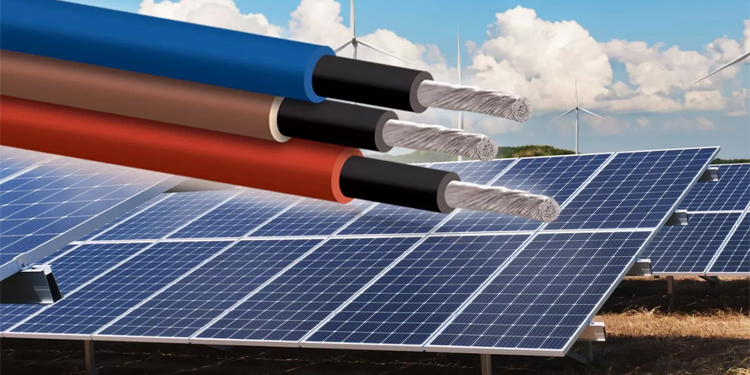Why Solar Cables Are Crucial in This Field?
Are standard cables letting you down in solar installations due to frequent damage and energy loss? Solar cables are designed to overcome precisely these problems.
Solar cables provide exceptional durability, weather resistance, and efficiency for photovoltaic installations, significantly outperforming standard cables in outdoor applications by minimizing power losses and maintenance needs.
Understanding what makes solar cables essential will help you optimize the reliability and efficiency of your solar energy projects. Let's explore deeper into their performance compared to standard cables and why they are crucial for efficient energy transfer.
How Does the Performance of Solar Cables Compare to Standard Cables?
Tired of frequent cable failures in your solar system due to harsh weather conditions? Standard cables often lack resilience against outdoor elements, making solar-specific cables indispensable.
Solar cables are engineered with specialized materials and construction, providing enhanced resistance to UV rays, temperature extremes, mechanical stress, and environmental factors compared to standard cables, ensuring superior performance and longer lifespan in photovoltaic systems.
UV and Weather Resistance
Solar cables are uniquely constructed to resist prolonged exposure to sunlight and weather. Unlike standard cables, solar cables use cross-linked polyethylene (XLPE) or specialized thermoplastic elastomer (TPE) jackets, preventing degradation and cracking. Standard PVC-insulated cables deteriorate quickly under direct sunlight, losing insulation integrity within a few years. This breakdown leads to increased maintenance, frequent replacements, and higher operational costs.
Temperature Stability
Solar installations experience a wide temperature range from extremely hot summers to freezing winters. Solar cables can reliably function from temperatures as low as -40°C up to +90°C, with short-term peaks reaching +120°C. Regular cables cannot handle these temperature extremes, becoming brittle and vulnerable to damage. This flexibility in temperature range ensures solar cables consistently perform regardless of climate.
Electrical Conductivity and Losses
Solar cables use tinned copper conductors specifically chosen for photovoltaic applications. Tinned copper enhances conductivity and prevents corrosion, reducing electrical losses significantly. Standard cables usually have plain copper conductors prone to oxidation and higher resistance, causing noticeable energy losses over time. By lowering resistance, solar cables deliver more efficient and cost-effective power transmission.
Mechanical Strength
The mechanical durability of solar cables surpasses that of standard cables, thanks to robust insulation and jacket materials. These cables can withstand abrasion, bending, pulling, and accidental impacts during installation. Standard cables often require careful handling to avoid damage, increasing installation complexity and labor costs. Solar cables simplify handling and installation procedures, saving time and resources.
| Feature | Solar Cable | Standard Cable |
|---|---|---|
| UV Resistance | High, long-term stability | Low, prone to rapid degradation |
| Temperature Stability | Wide range (-40°C to +120°C) | Limited, typically -20°C to +60°C |
| Electrical Conductivity | High (tinned copper conductor) | Moderate (plain copper conductor) |
| Mechanical Durability | High, abrasion-resistant | Moderate, less robust |
Why Are Solar Cables Essential for Efficient Energy Transfer in Solar Systems?
Are you experiencing power losses and inefficiencies in your photovoltaic installations due to subpar cable choices? Solar cables are specifically designed to enhance energy transfer efficiency, directly addressing these critical issues.
Solar cables ensure efficient energy transfer by minimizing electrical losses, providing stable electrical performance, enhancing safety standards, and simplifying installation processes. Their specialized construction is vital for maximizing the output and reliability of solar energy systems.
Minimizing Energy Losses
Efficient energy transfer is essential in photovoltaic systems, and cable quality directly influences this efficiency. Solar cables have low electrical resistance due to their high-quality tinned copper conductors, reducing voltage drops and power losses. In contrast, standard cables have higher resistance and corrosion susceptibility, negatively impacting overall system efficiency.
Stable Electrical Performance
Reliable electrical performance under variable environmental conditions is vital for solar installations. Solar cables maintain consistent electrical properties, even under extreme temperatures and prolonged sun exposure, guaranteeing uninterrupted energy transfer. Regular cables experience fluctuating electrical characteristics under harsh conditions, potentially causing system instability and power output reduction.
Enhanced Safety
Solar cables comply with stringent safety standards, including flame retardancy and low smoke emission, significantly improving overall system safety. Regular cables are not specifically designed for solar applications and typically do not meet solar-specific standards, increasing risks of fire hazards and system failures. Solar cables enhance safety by adhering to international standards like TÜV 2 PfG 1169/08.2007, IEC 62930, and UL 4703.
Simplified Installation and Maintenance
Easy installation and minimal maintenance directly affect the efficiency and cost-effectiveness of photovoltaic projects. Solar cables offer high flexibility, clear polarity markings, and excellent mechanical strength, simplifying installation procedures and reducing labor time. Standard cables, on the other hand, often require additional protective measures and careful handling, raising costs and complexity.
| Advantage | Description | Benefit to Solar Systems |
|---|---|---|
| Reduced Energy Losses | Lower cable resistance ensures efficient power transfer | Higher system output and cost savings |
| Electrical Stability | Consistent electrical performance under variable conditions | Reliable power generation |
| Enhanced Safety | Compliance with fire and safety standards | Reduced risks and improved safety |
| Easy Installation | Flexible design, simplified procedures | Lower installation and maintenance costs |
Conclusion
Choosing solar cables for photovoltaic projects significantly enhances system reliability, energy efficiency, safety, and long-term cost-effectiveness, making them essential for successful solar energy installations.

